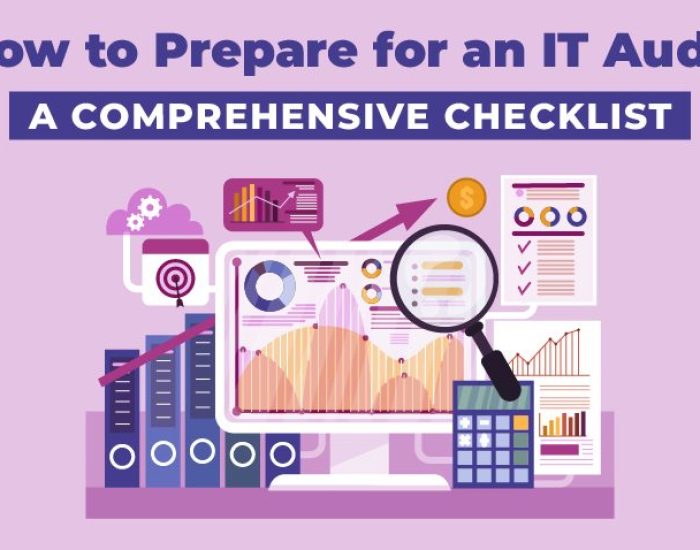
What is a Disaster Recovery Plan?
A disaster recovery plan (DRP) is also known as a disaster recovery implementation plan or an IT disaster recovery plan. It is a documented policy and process that helps an organization execute recovery processes in an unfortunate event to protect a business IT infrastructure and, more broadly, promote recovery.
DRP is crucial for any business. It identifies the purpose and objective of the plan and the people responsible for its implementation. It is essential to have a plan in case of an emergency. This article will explain the importance of having a disaster recovery system in place for your business.
Disaster Recovery Plan Goals
A disaster recovery plan’s goal is a series of steps that must be taken before, during, and after a natural or man-made disaster so that everyone on the team can follow them. A disaster recovery plan should address both purposeful and unintentional man-made disasters, such as the consequences of terrorism or hacking, as well as accidental disasters, such as equipment failure.
Your disaster recovery plan should contain goals for RTO (recovery time objective) and RPO (recovery point objective).
- RTO is the amount of time a business can be down in a disaster. It should be as short as possible – for example, four hours is the maximum acceptable downtime. The RTO is determined by how much the interruption disrupts regular operations and how much income is lost per unit hour due to the disaster. These characteristics, in turn, are dependent on the equipment and application in question (s). The length of an RTO is expressed in seconds, minutes, hours, or days. It’s crucial to include in a catastrophe recovery plan (DRP).
- The Recovery Point Objective (RPO) is the amount of time that passes during a disruption before the amount of data lost exceeds the Business Continuity Plan’s maximum permitted threshold or “tolerance. For example, if the last available good copy of data is from 18 hours ago and the RPO for this firm is 20 hours, we are still inside the maximum allowable threshold. In other words, it answers the question, “Up to what point in time might the business process be recovered given the volume of data lost during that interval?”
DR plan goal covers the procedures for contacting support and escalating issues. It should also include insurance coverage to protect you from any legal or financial problems that may arise. The disaster recovery plan should have a prioritized list of contacts within the disaster recovery team. You should hire a professional or a recovery solutions provider to help you create your plan. If you do not have a disaster recovery plan, your data will be unavailable to anyone without it.

What are the elements of a DRP?
A disaster recovery plan should have several elements:
- It must define what applications, documents, and resources are critical to the business.
- You should also identify offsite storage and backup procedures.
- A good plan will address the risks and threats associated with any emergency.
- Your DRP should also address the recovery of physical systems. If a disaster strikes, your organization will be ready to handle the crisis.
- This will ensure the continuity of your business.
Measures for Disaster Recovery Plan
Your plan will be broken down into two main parts: preventative measures and corrective measures.
Preventative measures focus on preventing disasters and restoring systems before they occur. In general, avoiding disaster is always the best option. When you’re thinking about preventative measures, you’re thinking about all of the factors that could lead to a disaster. Whether you have daisy-chained power lines or no door lock in your server room, this proactive approach to potential problems can save you a lot of time and effort in the long run.
The corrective measure focuses on repairing and restoring systems after a disaster occurs. Policies and procedures for a wide range of situations should be included in corrective actions. They should also assist you in determining recovery responsibilities for leaders and managers throughout your firm. Always see your BDR strategy as a collaborative effort inside your company.
What is a Disaster Recovery Checklist?
A disaster recovery checklist is an essential document for any organization. It helps minimize the damage caused by unplanned outages. Even a single lost file can significantly disrupt a company’s operations. Because documents are so hard to recover, companies need to ensure they’re properly backed up and stored in a remote location.
The first step in any disaster recovery plan is to identify the specific risk associated with the incident. A business may be at various risks, including natural catastrophes. While these events are rare, they can damage an organization’s reputation and profits. A disaster recovery plan will help minimize the damages while ensuring long-term business operation.
- Many studies have shown that one in four businesses will fail to recover from a disaster, and this statistic is primarily due to a lack of a DRP.
- 93 percent of organizations that lose data access for 10 days or more due to a disaster file for bankruptcy within a year, according to the National Archives & Records Administration in Washington.
A DRP is like a trekker’s contingency plan, with a comprehensive checklist that outlines the steps to take in case of a crisis.
What should be included in a Disaster Recovery Checklist
Disaster recovery plans often include a detailed checklist. Typical items on a DR checklist include recovery objectives, incident reporting, action response, and recovery procedures. The DR plan should consider your unique business needs and system vulnerabilities. It should be thorough and comprehensive to ensure your success.
As a result, you should employ a disaster recovery checklist that lays out the procedures you’ll need to do to cope with the crisis effectively.
The following items should be included in the disaster recovery plan checklist:
- Perform a risk assessment as well as a business impact analysis.
- Determine your rehabilitation goals.
- Assign roles and tasks to members of a disaster recovery team.
- Make a disaster recovery site.
- Be ready for a setback.
- Keep important documents in a secure area.
- Determine your equipment requirements.
- Make communication channels available.
- Procedures for dealing with disasters in detail
- Notify all relevant parties about the event.
- A disaster recovery plan should be tested and updated regularly.
- Choose the best disaster recovery plan depending on your requirements.
Plan your disaster recovery strategy
A successful disaster recovery plan follows a rigid procedure to rebuild systems that have experienced significant damage or are just too challenging to repair. The same strategy should be used to help define the checklists that give employees the instructions they need to rebuild critical systems in case of a catastrophe.’
You have two options: do-it-yourself disaster recovery (a less expensive but more error-prone approach) or partner with a backup and recovery service provider (reliable and effective option). To evaluate what will work best for you and your team, Protected Harbor considers every facet of your organization (e.g., the number of employees, the size of your IT infrastructure, the available budget, risk issues, and so on).
This leads right back to Protected Harbor’s four-point quick checklist. Are you experiencing slowdowns in connectivity? (If so, you may need more bandwidth.) Are you losing applications or entire systems? (If so, you may need more redundant assets.) Have you ever been breached? (If so, you probably need additional firewalls.) How often do you experience power outages? (If your answer is “too often,” you may need more backup power and generators.) These questions are just the start; Protected Harbor can help determine the answers to these and other questions –– putting you in the best possible position for avoiding disasters. Plan your disaster recovery strategy with us; contact us now.





